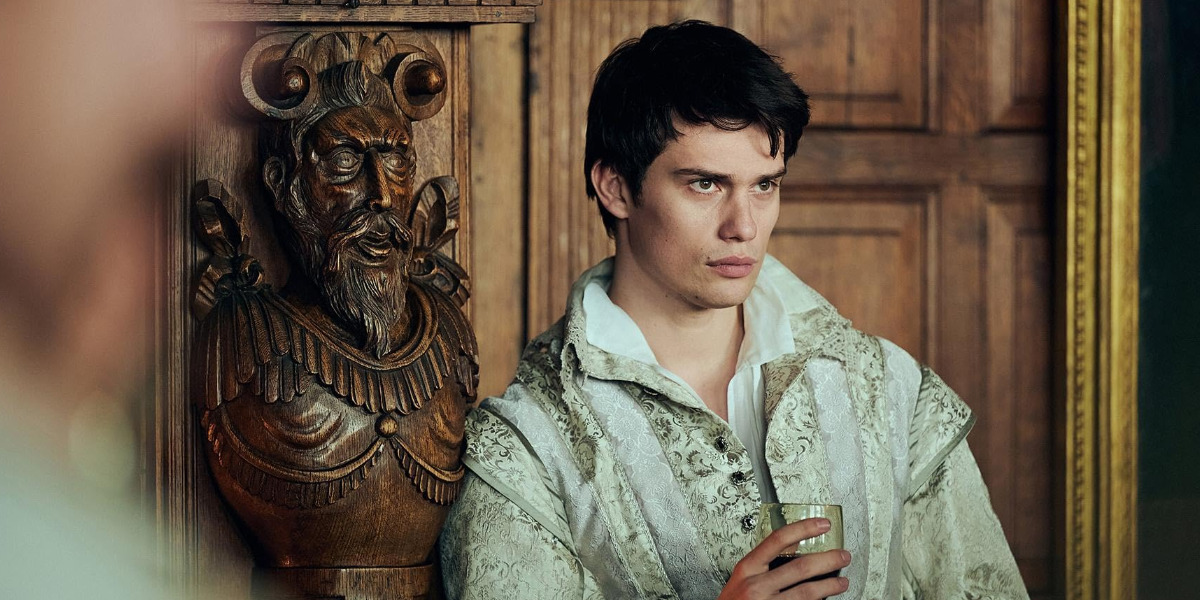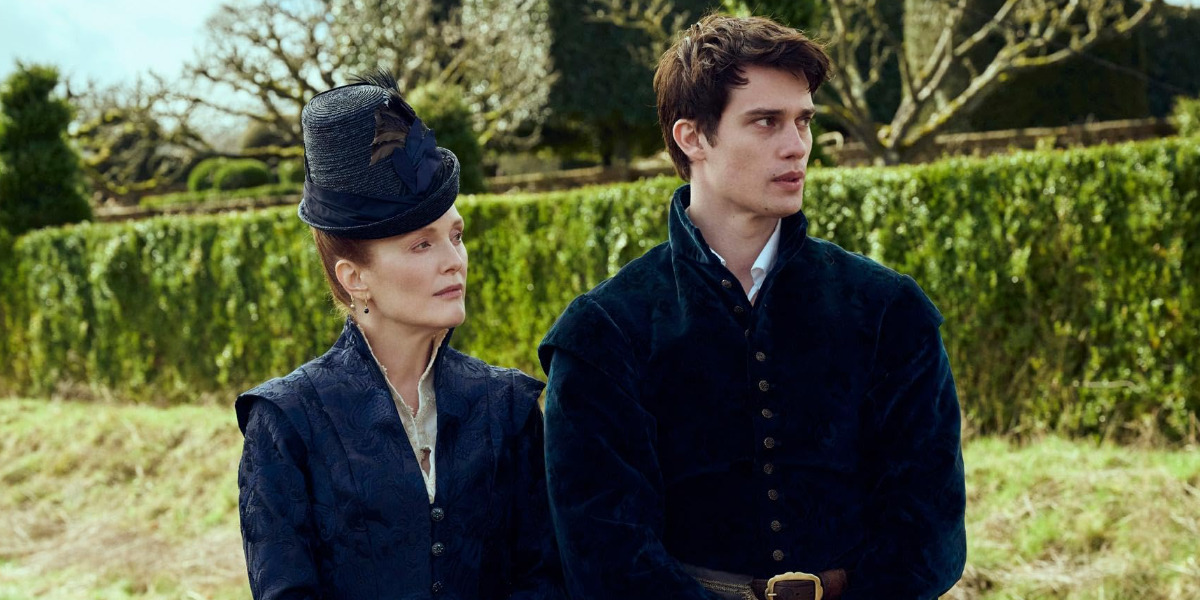The Starz drama show, ‘Mary & George,’ charts a stirring and scandalous story through the early 17th century in England and Scotland’s Jacobean era as it unfolds in the royal court of King James VI & I. The tale centers around George Villiers and his mother, Mary, who fashions her son into an enchanting young man capable of seducing the most powerful man in the country, King James, to earn favor and fortune. As a result, the conniving mother-son duo rise through the ranks of the king’s court, turning their lives around in a remarkable feat of social ascension.
The show’s debauched and decadent portrayal of the King’s court during the 1600s presents a compelling period piece ripe with themes of lust and power that fit in well with its depiction of monarchy politics. For the same reason, given its controversial representation of the historical period in English and Scottish past, viewers might be compelled to wonder just how much truth is behind the show’s account of King James and his rakish court. SPOILERS AHEAD!
King James VI & I’s Historical Affair With George Villiers
Born in 1566, as the only son of Mary, Queen of Scots, and her husband Henry Stuart, Lord Darnley, James VI ascended the English throne as James I in 1603. The man is best known for sponsoring the English translation of the Bible that came to be known as the King James Bible. However, the royal’s exploits within his personal — and particularly sexual — life have remained another point of interest among historians in scholarly conversations. Recognized for his inclination toward claiming same-sex lovers, King James is often discussed as one of the most prominent men in modern early Europe to have same-sex relations.

Whether or not these connections were romantic and sexual in nature has been contested in historical spaces with substantial evidence in favor of the claim. Either way, his inclination toward appointing male “Favorites” — a title bestowed upon the ruler’s intimate companions at the time — is a well-acknowledged fact. Notably, three men — Esmé Stewart, Sieur d’Aubigny, James’ much older cousin, and the much younger Robert Carr and George Villiers — are remembered as the ruler’s Favorites during his reign. Among these men, Villiers — James’ last Favorite — is often considered to be his greatest lover.
George Villiers was born in 1592 to an impoverished squire who died an early death. As such, the man was raised by his mother, Mary. Despite their strugglesome standing, Mary managed to provide an impressive education to her son, training him in the arts of dance and fencing. Eventually, the man caught King James’ eye, jumpstarting a campaign to displace Carr as the king’s favorite. Villiers’ position as the royal Cup-bearer, in particular, helped him become closer to James. Interestingly, the same instilled a parallel between Villiers and the mythical Ganymede, Zeus’ male lover.

Later, Villiers would go on to attract a comparison to Ganymede in poems written about James at the time. During his relations with James, Villiers rapidly made his way through the Royal Court, earning a knighthood followed by several noble ranks in quick succession. Eventually, James appointed Villiers the Duke of Buckingham, a previously extinct title. The same also assigned the latter the nickname “Buckingham.”
Famously, the king’s treatment of Villiers called accusations of favoritism his way, to which he reportedly responded with, “I, James, am neither a god nor an angel, but a man like any other. Therefore, I act like a man and confess to loving those dear to me more than other men. You may be sure that I love the Earl of Buckingham [George Villiers] more than anyone else and more than you who are here assembled. I wish to speak on my own behalf and not to have it thought to be a defect, for Jesus Christ did the same, and therefore, I cannot be blamed. Christ had his John, and I have my George.”
Furthermore, accounts claim James and Villiers’ notoriety for not shying away from displays of affection through kissing in public. Likewise, the King often referred to the Duke as “Steenie,” a nickname derived from St. Stephen, who had “the face of an angel,” another instance that seemingly implies their romantic connection. One of the many written correspondences between the pair cites King James’ words, “I will live and die a lover of you,” penned toward George Villiers. Consequently, we can infer that the reported love affair between James and Geroge, which informs the show’s central narrative, likely holds a tangible basis in reality.
Mary & George and Its Creative Liberties
For the most part, ‘Mary & George’ strives to retain historical accuracy within its narrative. In fact, the show’s screenplay is largely based on the 2017 non-fiction book, ‘The King’s Assassin: The Fatal Affair of George Villiers and James I,’ by Benjamin Woolley. However, the prominent theme within the novel that asserts Villiers’ involvement in James’ death with allegations of poisoning remains a historically contested idea. In his time, Villiers saw significant public dislike, which contributed to the opinion that he had a hand in James’ death. Nevertheless, these accusations were never legitimately proven. Still, the show draws from a widely held belief for this aspect of its storyline.

On the other hand, much of Mary’s role within the narrative comes from the imagination of the show’s creative team. Liza Marshall, an executive producer on the show, acknowledged the same and said, “There’s not very much written about Mary Villiers, and pretty much everything there is states how evil she was – that she was basically a witch.” Still, the woman remained a point of curiosity for the creators involved.
Discussing the same, Marshall continued, “But she [Mary] must have been incredibly clever because women had no formal power during that period. She managed to use her wiles to raise not only her son— but also herself, and she became the closest woman to James I.” Consequently, much of her character was fictionalized without many historical accounts backing up her portrayal.
Ultimately, the base framework of the show is a historical account of reality. Yet, the narrative’s intricacies when it comes to the details surrounding the characters and their motives emerge in part from public or individual speculation. Therefore, as far as dramatized historical stories go, ‘Mary & George’ remains a true story. Consequently, the few instances and nuances that don’t have a cemented basis in historical records can be labeled creative liberties essential to crafting such a narrative. Thus, the show’s relation to real life remains evident.
Read More: Best Historical Movies on Netflix


You must be logged in to post a comment.